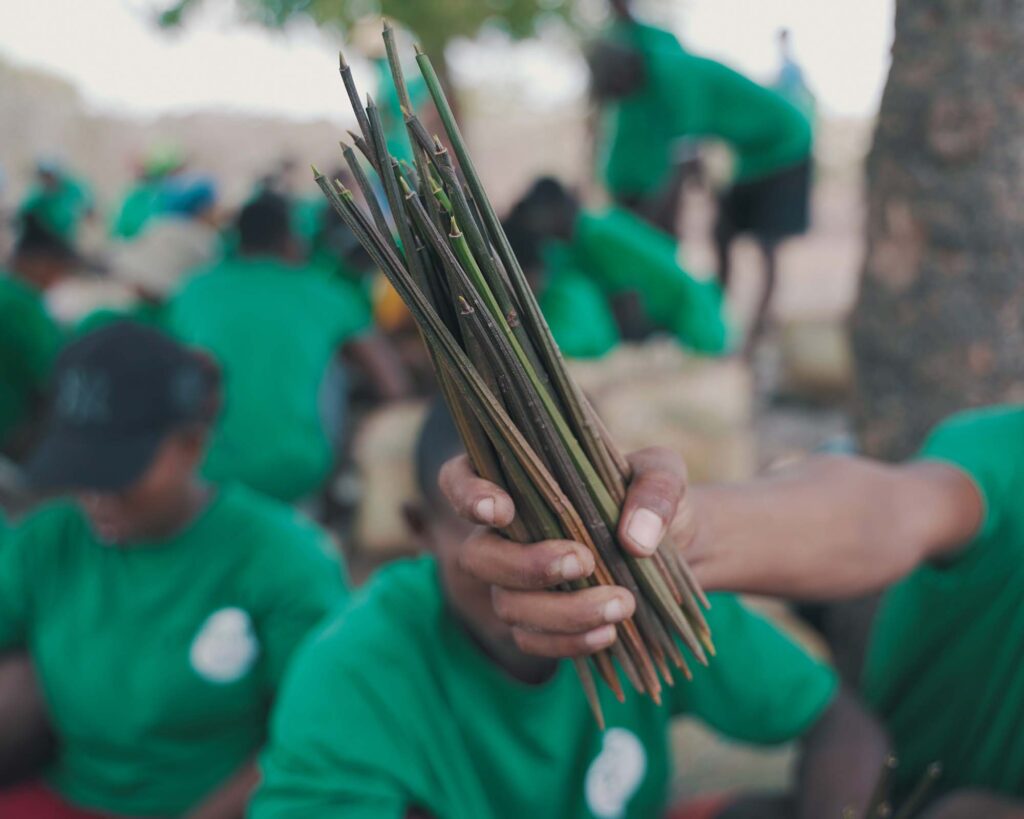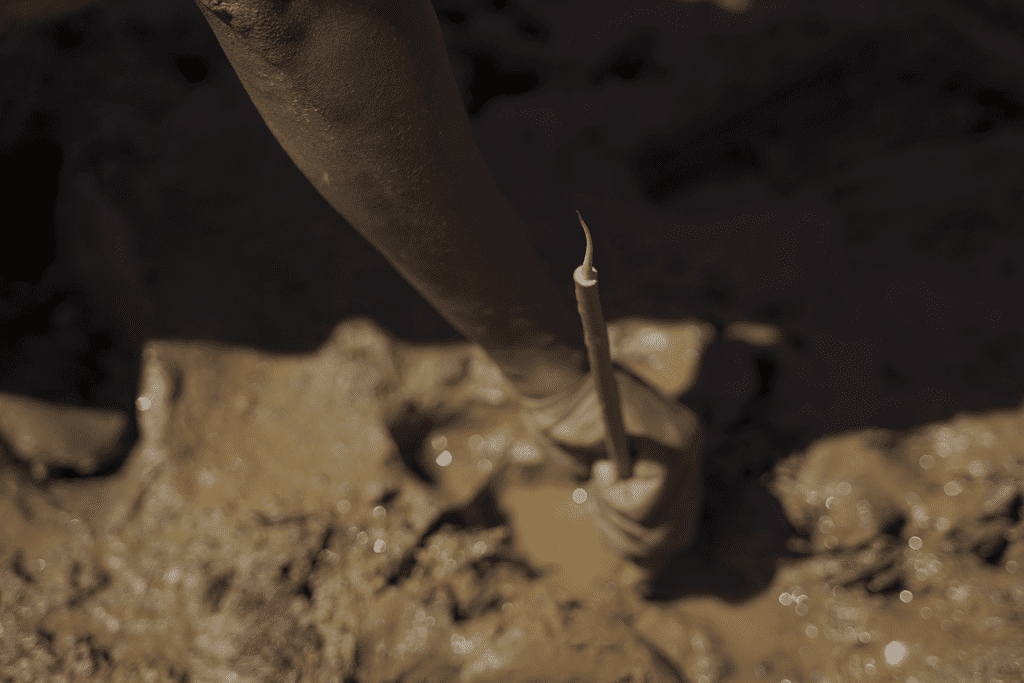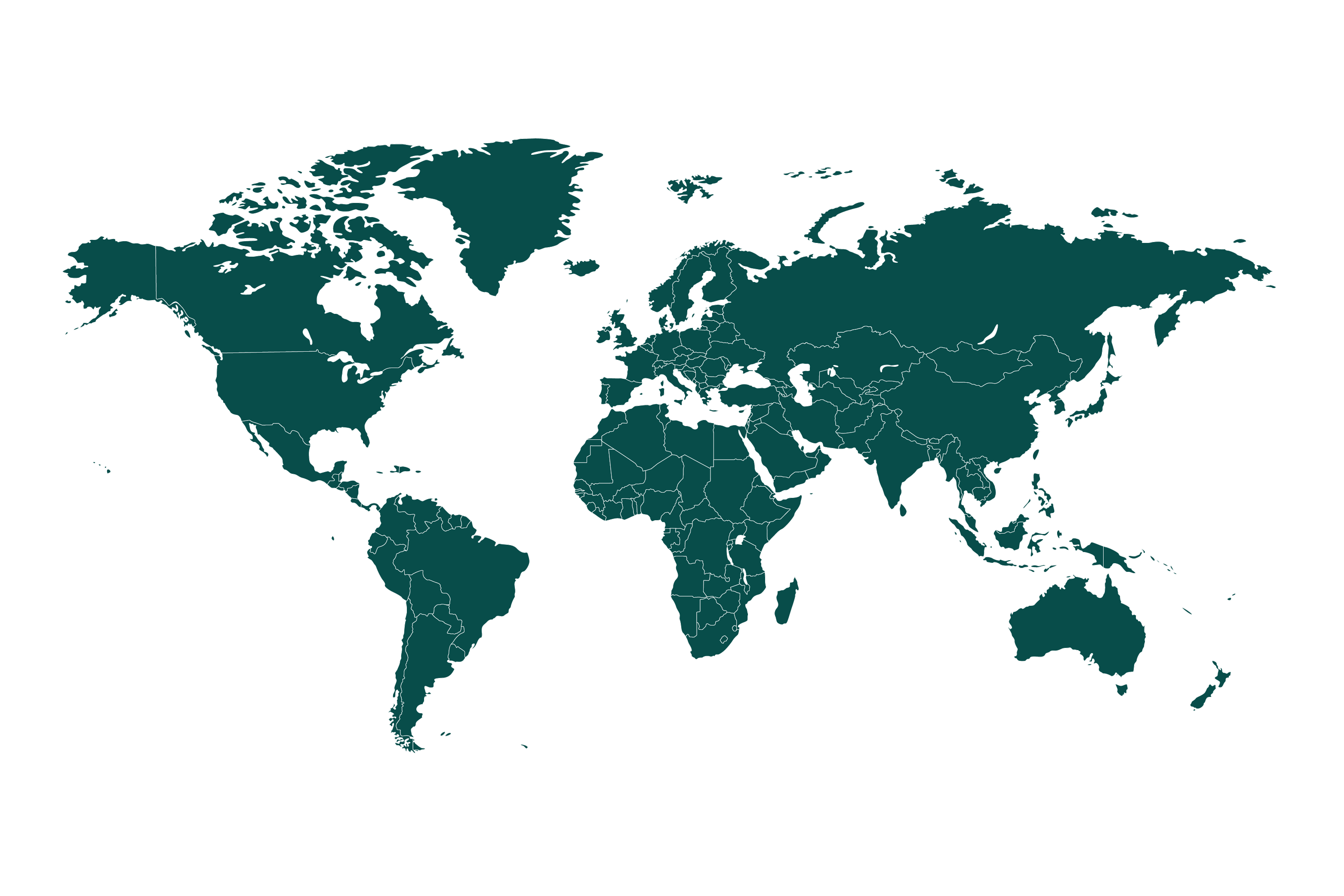What is mangrove restoration?
Mangrove restoration is the process of restoring degraded or destroyed mangrove forests to restore their ecological and socio-economic benefits. Mangroves are crucial coastal ecosystems that provide habitat for diverse marine life, act as natural barriers against coastal erosion, and serve as significant carbon sinks. A project’s characteristics can vary strongly depending on geographic location, environmental conditions, and socio-economic contexts.
We focus mainly on mangrove restoration using the direct seeding technique combined with community-led restoration. This means that, together with local communities, we plant mangrove propagules (seedlings) of the most ideal species directly in the appropriate coastal environment. Other restoration techniques are: nursery-based transplanting, cluster planting, assisted natural regeneration (ANR), and hydrological restoration.
- Blue carbon – Carbon captured and stored by marine and coastal ecosystems, including mangroves, salt marshes, and seagrasses.
- Brackish water – Water with a salinity level between freshwater and seawater, a key characteristic of mangrove ecosystems.
- Carbon sequestration – The process of absorbing and storing atmospheric carbon dioxide in vegetation, soils, and sediments.
- Coastal erosion – The wearing away of land due to wave action, currents, or human activity, often mitigated by mangrove forests.
- Ecosystem services – The benefits provided by natural ecosystems, such as coastal protection, fishery support, and carbon storage.
- Estuary – A coastal water body where freshwater from rivers meets and mixes with saltwater from the ocean, often home to mangroves.
- Hydrodynamics – The movement and flow of water in coastal ecosystems, crucial for mangrove growth and restoration planning.
- Keystone species – Species that have a disproportionate impact on their ecosystem, such as mangroves, which support biodiversity and stabilize coastlines.
- Mangrove propagules – Seedlings that develop while still attached to the parent tree and later drop into the water to establish new mangrove trees.
- Monoculture planting – The practice of planting only one mangrove species, which can reduce biodiversity and ecosystem resilience.
- Pneumatophores – Specialized aerial roots that allow mangroves to absorb oxygen in waterlogged and anoxic (oxygen-deprived) soils.
- Resilience-based restoration – Restoration methods that enhance the ability of mangrove ecosystems to adapt to climate change and environmental stressors.
- Rhizophora species – A common genus of mangrove trees known for their stilt roots, which stabilize soil and withstand coastal waves.
- Sediment accretion – The natural buildup of sediments that helps expand mangrove forests and protect coastlines from erosion.
- Socio-ecological approach – A restoration strategy that integrates ecological science with local knowledge and community participation.
- Tidal zonation – The natural division of mangrove species into zones based on water depth and salinity levels.
- Wetland mitigation – Restoration or creation of wetlands, including mangroves, to compensate for habitat loss due to development.
- Wave attenuation – The process by which mangroves reduce the energy of incoming waves, protecting shorelines from storm surges.

Madagascar
- Restore mangroves in Bombetoka Bay
- Protect coastal areas
- Blue carbon credits
- Empower communities
- Provide habitats for shrimp, crabs, and fish
- Boost regional seafood economy

New project
coming soon
Can you guess where?








